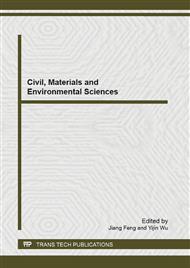p.351
p.355
p.359
p.363
p.367
p.371
p.379
p.384
p.388
Application of Fuzzy Cluster Methods to Atmospheric Functional Regionalization in Baotou, Inner Mongolia
Abstract:
Air environmental quality data (SO2, NO2, and PM10) of six automatic monitoring points monitored in 2010 and fuzzy clustering analysis method were applied to regionalize the atmospheric functional regions in Baotou City. It was demonstrated that the atmospheric functional regions were divided into two classes, which is consistent with the regional actual situation. This study provides a scientific basis for the comprehensive improvement of the urban environmental planning.
Info:
Periodical:
Pages:
367-370
Citation:
Online since:
August 2013
Authors:
Price:
Сopyright:
© 2013 Trans Tech Publications Ltd. All Rights Reserved
Share:
Citation:


